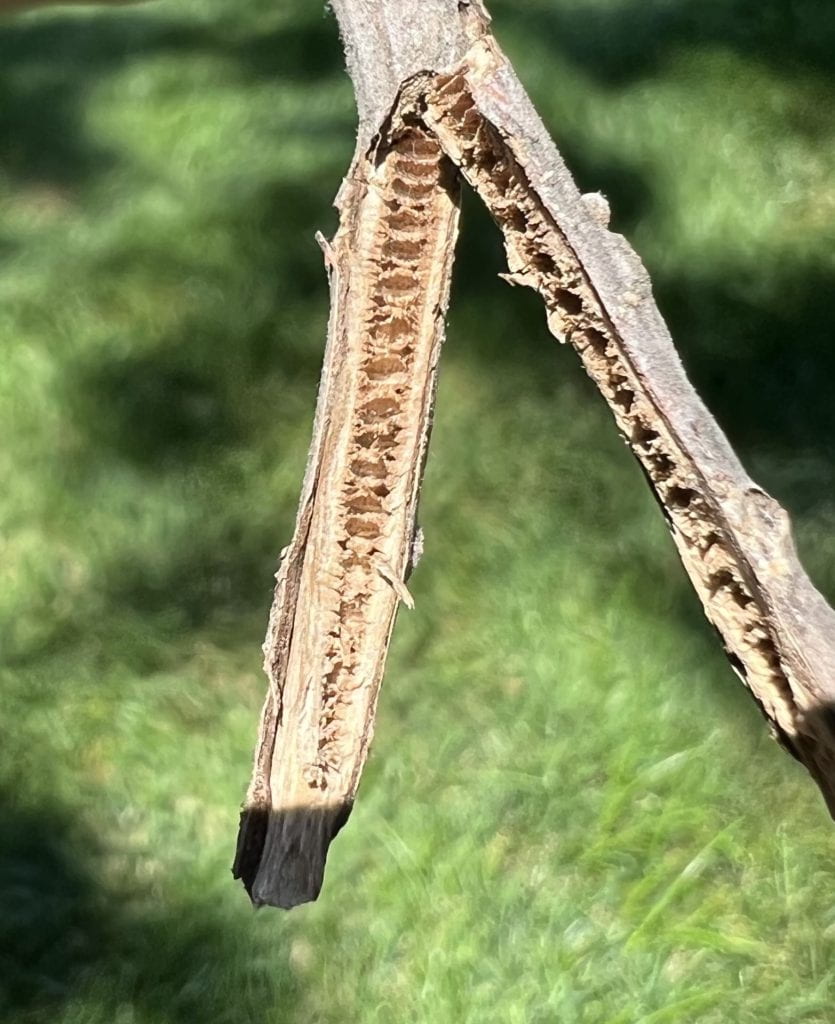Black Walnut
Arbor Walk #18, Treekeeper ID #1386

This is a large Missouri native tree whose wood is used for woodworking in the furniture and cabinet industry. It is often considered one of the most durable and attractive woods in the world.
Arborists and other planters have to be very careful with the vegetation they plant nearby since the Black Walnut’s roots extend very far and produce a natural, unique herbicide called juglone. This substance is also found in the fruits’ husks and the leaves. The herbicide can kill or stunt growth in several varieties of plants such as apple trees, many nightshades, lilacs and much more. In nature, this provides a significant advantage by inhibiting some of its competition.
More infromation on the Black Walnuts in our Arboretum here!


GPS Coordinates
N/A
Percent Concrete
N/A
Distance to Buildings
| Year | Close Building #1 | Close Building #2 | Close Building #3 |
|---|---|---|---|
| 2020 | Busch Hall, 3.84 m | Brookings Hall, 5.69 m | January Hall, 50.55 m |
Distance to Other Species
| Year | Close Species #1 | Close Species # 2 | Close Species # 3 |
|---|---|---|---|
| 2020 | Black Walnut, 1.52 m | Flowering Dogwood, 5.34 m | Flowering Dogwood, 5.67 m |
Standard Measurements
| Year | Height (m) | DBH (cm) | Crown Diameter N-S (m) | Crown Diameter E-W (m) | Average Crown Diameter (m) |
|---|---|---|---|---|---|
| 2020 | 27.8586 | 77.39 | 15.87 | 15.43 | 15.65 |
| 2023 | 28.5 | 78 | 15.3 | 21.7 | 18.5 |
Nests and Pests
| Year | Description |
|---|---|
| 2020 | A bundle of leaves that never fell, and all appear stuck together (potential case of fall webworms) Grey lichen and a thin coating of green algae appear on the trunk bark |
| 2023 | Dangling branch on west edge of crown |
Leaf Identification
The leaves of the Black Walnut are even-pinnately compounded with 14 to 24 leaflets. They are a yellowish-green color and turn to yellow in the fall. It has an alternate leaf arrangment. The leaflets are ovate- to lanceolate-shaped with serrated margins and pinnate veins. The rachis can be hairy (pubescent).
Twig and Bud Identification
The twigs of the Black Walnut are light brown in winter and have chambered piths. The leaf scars are three lobed, and botanists often call it a “money-face.” The buds are tan and comparetively large to other trees and tan. It has multiple, sometimes pubescent, scales.
Bark Identification
The Black Walnut has ridged and furrowed grey bark.
Fruit Identification
The fruit of the Black Walnut is a round, indeshiscent drupe with a green, inedible husk around it. The seed inside is edible. The fruit is incredibly firm, and is very hard to break open.
Flower Identification
The flowers of the Black Walnut are yellow-greenish. The males have 3″ to 5″ long, single-stemmed catkins , and the females are on short, green spikes.
[photo forthcoming]













